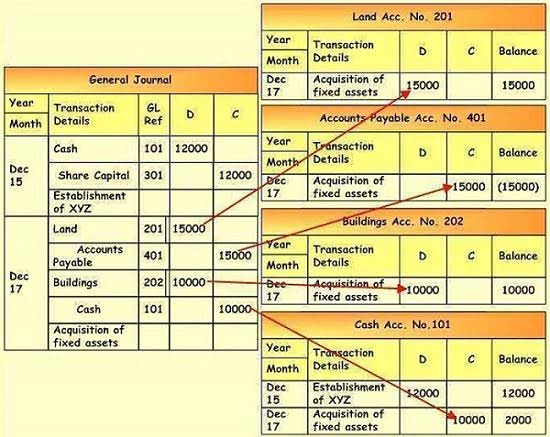
Indirect costs incurred in manufacturing operations are known as manufacturing overhead, while indirect costs incurred in the general and administrative area are known as administrative overhead. Examples of indirect costs are accounting and legal expenses, administrative salaries, office expenses, rent, security expenses, telephone expenses, and utilities. Correct allocation of direct and indirect costs leads to more accurate and transparent budgeting, forecasting and cash flow planning, as well as reporting for management and financial purposes.

Measurement & Valuation: How to allocate direct and indirect expenses?

Similarly, a company may not be able to easily assign a utility bill (e.g., electricity, water, waste collection) to a particular cost object (e.g., department) because the utilities were used by the whole building. To find out how much it truly costs you to produce a product or perform a service, you might also consider an activity-based costing (ABC) system. Identifies any limitations on the use of the rates, the basis of accounting, rate specific information (such as fixed or provisional rates), the use of the NICRA by other federal agencies, and other information. If your organization does not have a current negotiated (including provisional) rate or has an expired rate, your organization may choose to negotiate a rate with its cognizant agency. If your organization wants to negotiate a NICRA and NEH is its cognizant agency, see Guidance for Negotiating an Indirect Cost Rate Agreement with NEH.
Related AccountingTools Courses
Absorption is the method in which all project costs, both direct (like materials and labor) and indirect (like office rent or project management fees), are allocated to specific construction tasks or phases. Each task or phase of the work “absorbs” a proportionate share of the total costs. These expenses are shared across multiple projects or activities and are not directly traceable to a specific cost object or activity. Fuel costs for a CEO visiting another company’s office would be an indirect cost, since they cannot be directly tied to the production of a good or the provision of a service. You need to keep track of your indirect costs because if they are increasing, you may need to price your goods differently—or quickly improve your efficiency in order to achieve a higher gross margin.
Formula: How to Calculate Direct and Indirect Costs?
Indirect costs, also known as overhead costs, are expenses that cannot be directly attributed to a specific project or client, but are necessary for a freelancer to run their business. Indirect costs are sometimes referred to as “operating expenses” https://www.bookstime.com/ and are typically ongoing expenses that are not tied to a specific project. The role of a financial analyst is to make sure costs are correctly attributed to the designated cost objects and that appropriate cost allocation bases are chosen.
Accounting: What Are Direct & Indirect Costs in Financial Statements?
These invoices are sent to all customers to bill them for water deliveries. While the printer paper isn’t directly tied to bottling or distributing water, indirect costs are also referred to as it is critical to be able to bill companies for their service. Many organizations use a predetermined overhead rate (PDOR) to budget their overhead costs.
Through the examples noted, indirect costs — also called overhead or administrative costs — are a broader category of expenses. Contrastingly, direct costs can be tied to a specific, revenue-generating good or service. For Justin, these two costing terms and their respective application to his business will enable him to more effectively and efficiently identify, review, and plan for costs. This distinction between indirect and direct costs is a simple yet effective tool for classifying and accounting for the costs incurred to deliver goods or services. Examples of indirect costs include utilities, maintenance on equipment, miscellaneous supplies, salaries, and administrative expenses.
- Other expenses, such as cash register tape, bags to put customer purchases in, and utilities, are similarly considered indirect costs.
- In the case of Justin’s barbershop, he might estimate the total cost of a cleaning service for the year to be $12,000 and the number of visits to be twice a month.
- The other are recurring indirect costs, which repeat for a particular company, like maintenance of records or the payment of salaries.
- Therefore, manufacturing overhead includes materials or labor that do not directly become part of the product (such as parts and supplies used to repair a machine used in the manufacturing process).
- When creating your income statement, you have different line items for income and expenses like revenue, cost of goods sold (COGS), and operating expenses.
- After pinpointing all indirect expenses, the next step is to project their anticipated amounts.
For the stationary store, the purchase of bottled water is not tied to any specific sales or products offered at the store. Because of this, the water – used by your employees when they need a drink – is an indirect store supply. Understanding the true total cost of producing goods and services enables a business to make sound decisions, particularly in the areas of pricing, budgeting, operational efficiency, and taxation. To make the matter even more complicated, direct and indirect expense categories can vary among different industries and even within the same business.
Variable costs

Sure, you can look at your cost of goods sold to see how much it costs to produce a good. Knowing which costs are direct vs. indirect helps you with recording expenses in your books and on your business income statement. The same cost can be labeled as indirect in one industry and direct in another. For example, fuel cost in a telecom is usually allocated as an indirect cost, while for an airliner it is a direct cost. Similarly, indirect fixed cost is not traceable or directly related to each unit of product and neither does it vary as per the output, for e.g. guard salary.
Examples of Direct Costs
These costs are required for an organization to operate, enabling the production of a product or service. The essential difference between direct costs and indirect costs is that only direct costs can be traced to specific cost objects. A cost object is something for which a cost is compiled, such as a product, service, customer, project, or activity. These costs are usually only classified as direct or indirect costs if they are for production activities, not for administrative activities (which are considered period costs). Unlike direct costs, which can be directly tied to a specific cost object, indirect costs are incurred for the overall operation of a business and are shared among various cost objects.
Direct costs tend to be variable costs, while indirect costs are more likely to be either fixed costs or period costs. These costs are not directly related to producing a specific product or performing a service, so they are indirect costs. Indirectly, they help you produce goods and perform services, but you can’t directly apply them to a specific product or service. An indirect cost rate represents the ratio between the total indirect costs and benefiting direct costs, after excluding and or reclassifying unallowable costs, and extraordinary or distorting expenditures.
